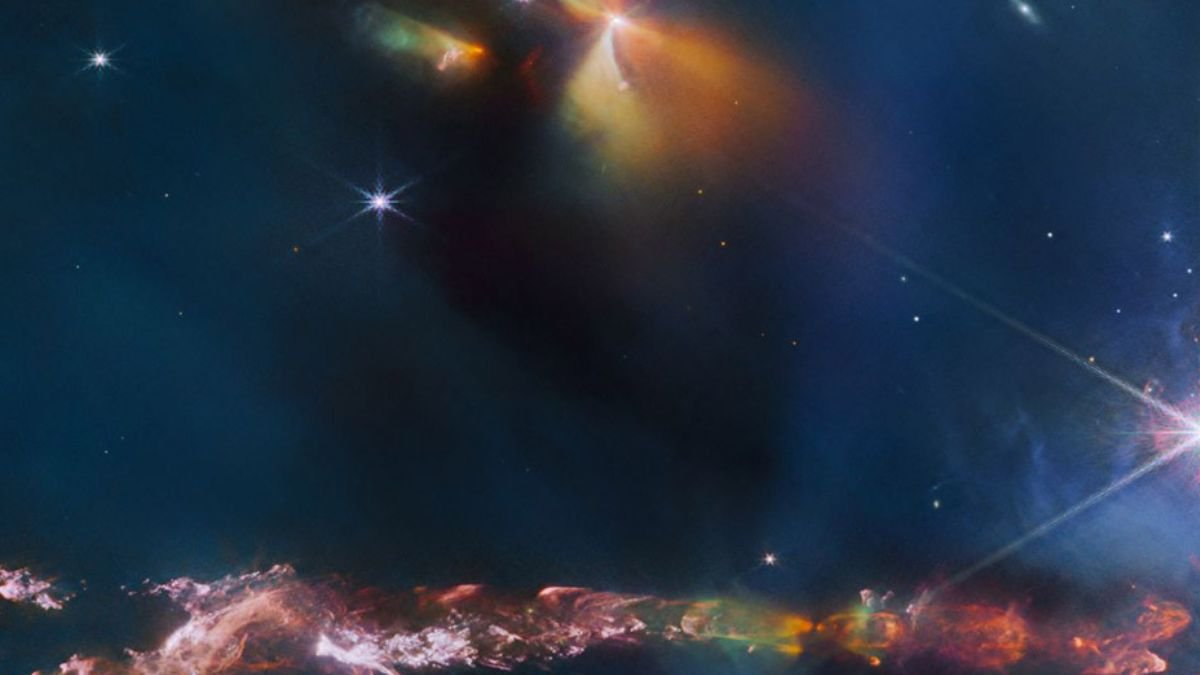recently released James Webb Space Telescope (JWST) Image of the Moon is a Herbig-Haro objectThe name given to small regions of gas and dust normally associated with the formation processes of young protostars. This type of object, called HH 797, is formed when gas jets ejected by newborn stars interact with the surrounding gas and dust.
Because JWST has the power to see inside these cocoons of gas and dust that host young protostars, it pointed its Near Infrared Camera (NIRCam) and made a surprising discovery: What was thought to be a single protostar is actually a binary star system, meaning two stars form at the same timein the same molecular cloud.
This “gestation” phase, during which stars accumulate mass, can last up to 500,000 years. During this period, gas falling on the star’s surface creates shocks and releases energy through twin jets of ionized gas, even though they have not yet begun to fuse in their cores. It is this energy that illuminates and makes the Herbig-Haro object visible.
Herbig-Haro objects are common in space
Commonly seen in space, Herbig-Haro objects are located close (3.26 light-years) to the first star (or protostars) that emits the jets that illuminate them. More than 1,000 of these objects have been detected in the Milky Way alone.
Characteristic jets of partially ionized gas move at hundreds of kilometers per second and collide with nearby molecular clouds.
From a cosmic perspective, HH objects are temporarylasting only a few tens of thousands of years. Astronomers can only observe them as they move from their source into the interstellar medium.
How did James Webb manage to photograph object HH 797?
Because this object is not visible in optical light, ordinary telescopes cannot observe HH 797. The energetic jets emitted by protostars excite molecular hydrogen, carbon monoxide, and other molecules in the region, which begin to emit infrared light that is easily captured by the JWST.
In addition to molecular hydrogen and carbon monoxide, the colors visible in the image also come from other molecules such as iron, methane and polycyclic aromatic hydrocarbons. The latter are complex molecules consisting of interconnected carbon rings that, due to their relative stability, are considered potential precursors of complex organic compounds, including those related to the structure of life.
Later ground-based studies showed that the gas associated with HH 797 was moving at different speeds and in different directions. The part that appears red (in the lower right corner of the image) is moving away from us, the part that appears blue (in the lower left corner) is moving towards us. As for the speed asymmetries mentioned, astronomers did not yet know that they were measuring streams from two stars.
Stay up to date with the latest news from James Webb at TecMundo. If you wish, enjoy discovering how telescope lenses contributed to the evolution of astronomy.
Source: Tec Mundo
I’m Blaine Morgan, an experienced journalist and writer with over 8 years of experience in the tech industry. My expertise lies in writing about technology news and trends, covering everything from cutting-edge gadgets to emerging software developments. I’ve written for several leading publications including Gadget Onus where I am an author.













